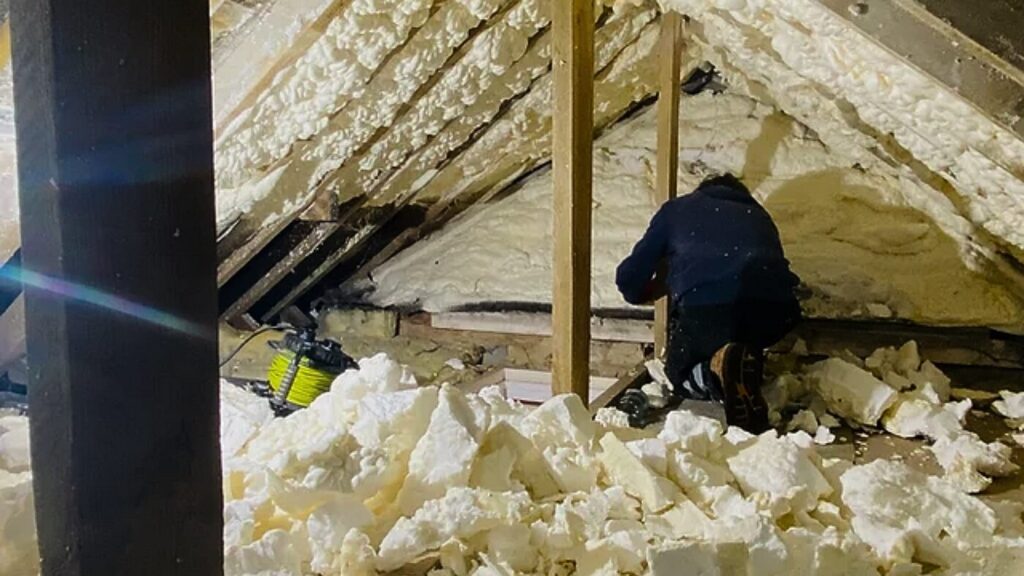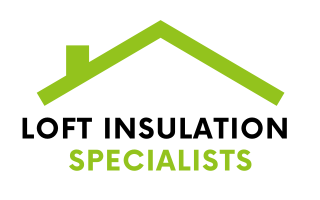
Spray foam insulation has been a popular choice for many homes. However, there are situations where it becomes necessary to remove it. Whether due to improper installation, evolving building regulations, or preparing a property for sale, professional spray foam removal can be the safest and most effective option.
Why Consider Spray Foam Removal?
- Improper Installation: Achieving an effective insulation seal requires precise application. Gaps, uneven coverage, or weak bonding can lead to problems such as air leakage or moisture buildup. Unfortunately, not every installation meets these high standards.
- Building Regulations and Inspections: Building codes are continually updated, and some older installations may no longer comply. In some cases, spray foam might impede ventilation or access to certain structural elements, making removal essential for compliance.
- Property Sale or Mortgage Approval: Many mortgage lenders are cautious about properties with spray foam insulation due to potential structural concerns. Some may even require spray foam removal to allow a sale or refinance to proceed.
- Moisture and Damp Issues: Inadequate installation can trap moisture, leading to problems such as mould, mildew, and eventually wood rot. Over time, this moisture can weaken the structure and lead to costly repairs.
- Health and Air Quality: Poorly installed spray foam can release certain chemicals over time, potentially impacting indoor air quality. While most spray foam is safe when installed correctly, any installation issues can introduce health risks.
The Professional Spray Foam Removal Process
Spray foam removal is best left to professionals with the right tools and expertise. Here’s what you can typically expect from a professional spray foam removal process:
- Assessment and Inspection: The removal process begins with a detailed inspection to locate where spray foam has been applied and identify potential problem areas like damp spots or ventilation issues.
- Preparation and Safety Precautions: Professionals take extensive safety measures, such as sealing off the area, donning protective gear, and ensuring proper ventilation. This step protects both the removal team and your property.
- Foam Extraction: Using specialised equipment, the team will carefully remove the spray foam layer by layer. They’ll take care to avoid damaging roofing timbers or structural elements, tailoring their approach to the foam type and installation specifics.
- Cleaning and Final Inspection: After removing the foam, professionals clean the area to eliminate any residue. A thorough inspection ensures there’s no underlying damage, helping to prepare the area for any future insulation needs.
- Safe Disposal: Spray foam materials require proper disposal. Professionals handle this aspect, ensuring all materials are disposed of according to safety and environmental regulations.
Benefits of Professional Spray Foam Removal
Here are several reasons why hiring professionals is the best choice for spray foam removal:
- Efficiency and Thoroughness: Experienced professionals bring the necessary tools and know-how to complete the job quickly and thoroughly.
- Reduced Risk of Structural Damage: Spray foam removal without damaging underlying materials requires a skilled hand. Professionals can safely handle this process, minimizing the risk of costly repairs.
- Enhanced Safety and Compliance: Spray foam dust and particles can pose health risks. Professionals have the equipment to keep the environment safe during removal and to comply with disposal standards.
- Readiness for New Insulation: Once the foam is gone, the space is ready for fresh insulation, ensuring a safer, more energy-efficient home.
Frequently Asked Questions About Spray Foam Removal
Addressing common questions can make the post more reader-friendly and informative. Possible FAQs:
- Is spray foam removal messy?
While the process can produce dust and particles, professionals use protective measures to keep the area clean and contain debris. - How long does spray foam removal take?
The timeline varies depending on the size of the area and the type of spray foam. Generally, it can take a few hours to a couple of days. - Will I need new insulation after spray foam removal?
Yes, replacing insulation is important after removal to maintain energy efficiency. Professionals can advise on the best insulation options for your space.
Choosing Roll-Out Loft Insulation After Spray Foam Removal
Once spray foam is removed, choosing a new insulation type that fits your home’s needs is essential. Roll-out loft insulation is an excellent option for many homeowners, especially those looking for a straightforward and effective way to insulate their loft space.
Roll-out loft insulation, also known as blanket insulation, offers several benefits:
- Easy Installation: Roll-out insulation is relatively quick to install compared to spray foam and can be laid in just a few hours, depending on the loft’s size.
- Cost-Effective and Energy Efficient: This type of insulation is known for its affordability while still providing excellent thermal performance, helping to reduce heating costs over time.
- Eco-Friendly Options Available: Many roll-out loft insulation products are made from recycled materials, making it an environmentally friendly choice.
A professional service ensures that the installation is done safely and meets current energy efficiency standards.
Ready to Remove Spray Foam? Here’s What to Do Next
If you’re facing issues related to spray foam insulation, removing it professionally can help restore your property’s structural health and prepare it for new insulation. Companies like Loft Insulation Specialists bring the expertise needed to ensure a safe, thorough process. Whether you’re addressing damp problems, meeting updated regulations, or preparing for a sale, opting for professional spray foam removal ensures a smoother, safer experience.








